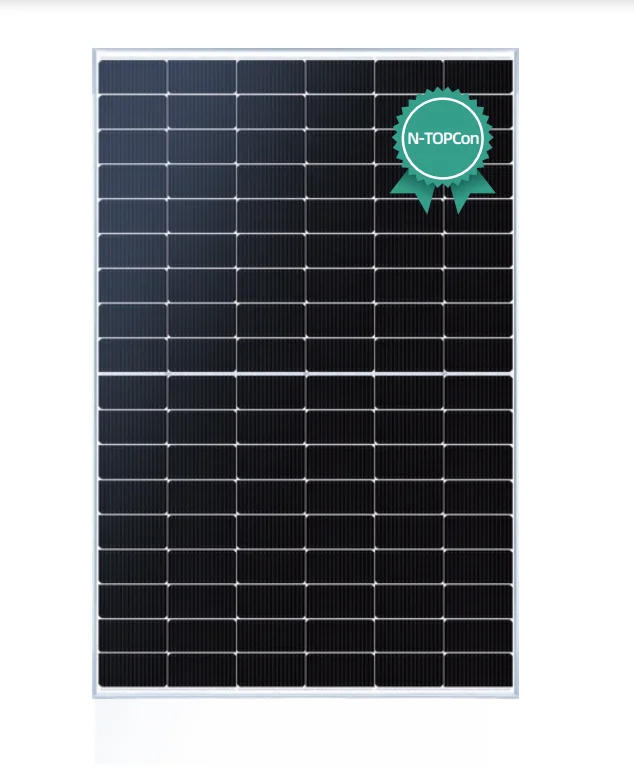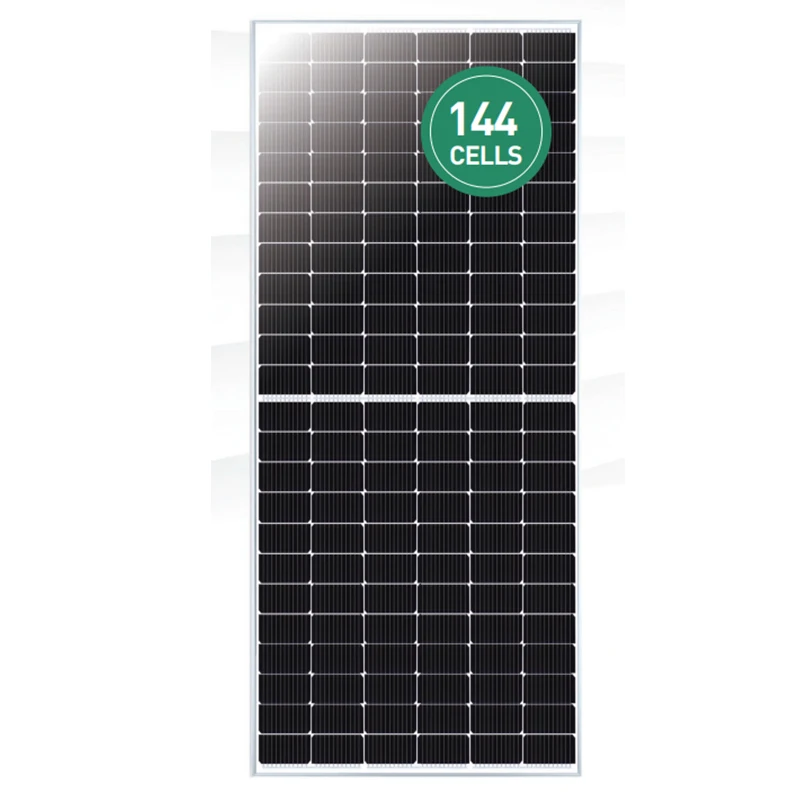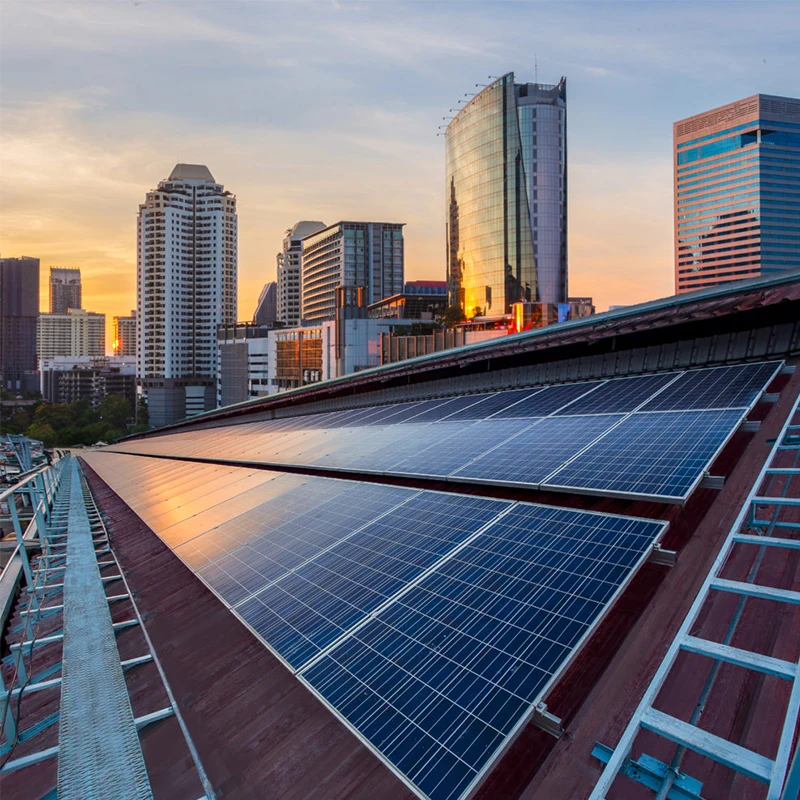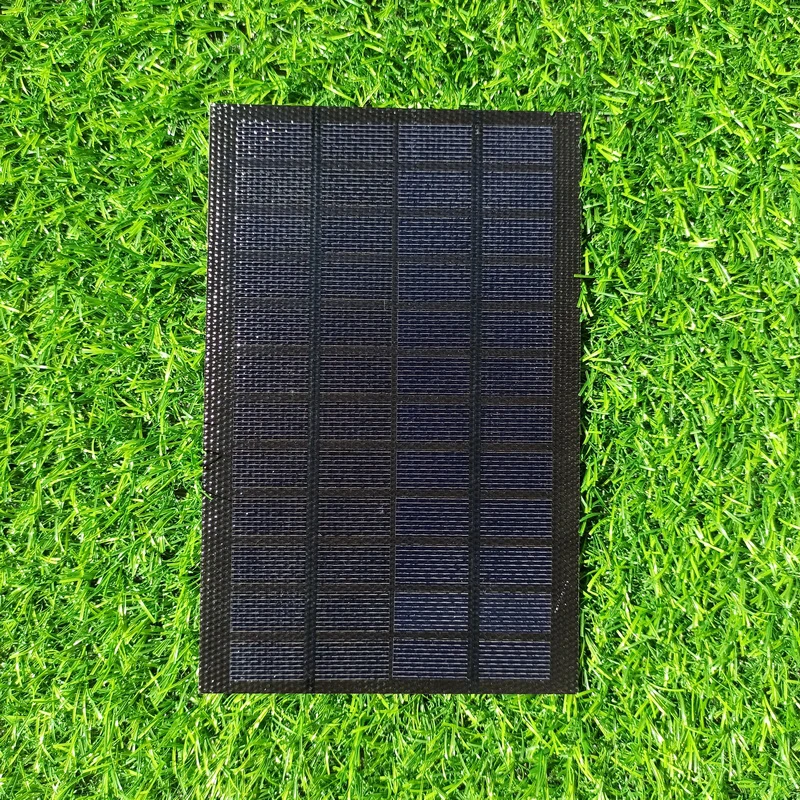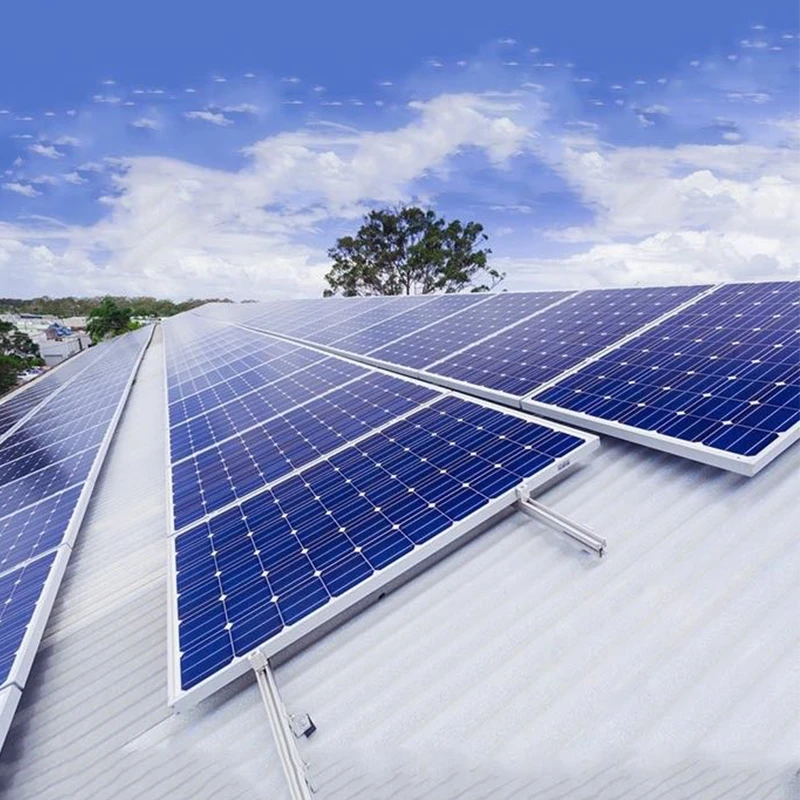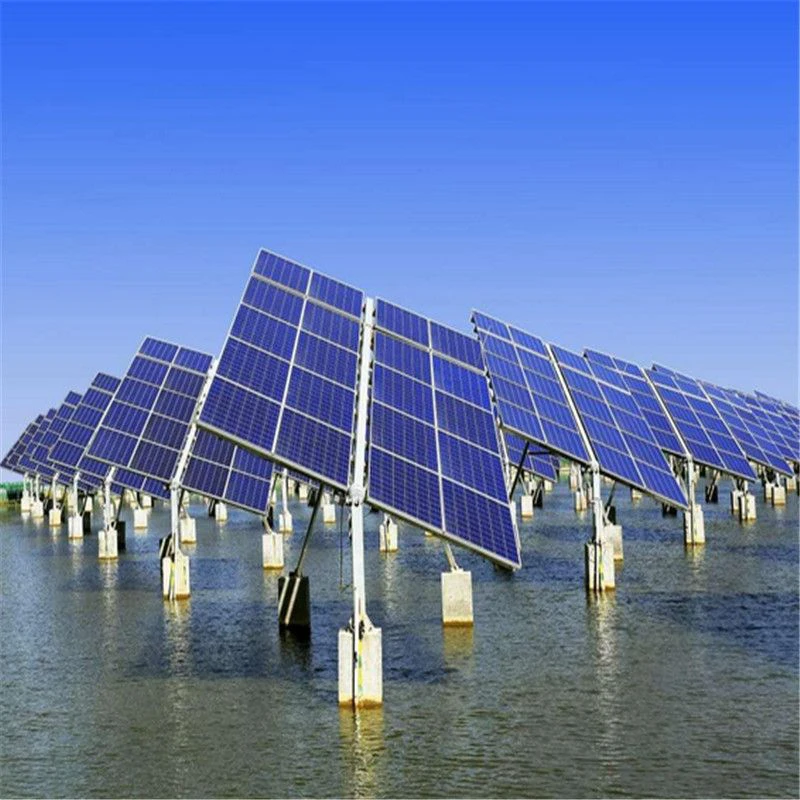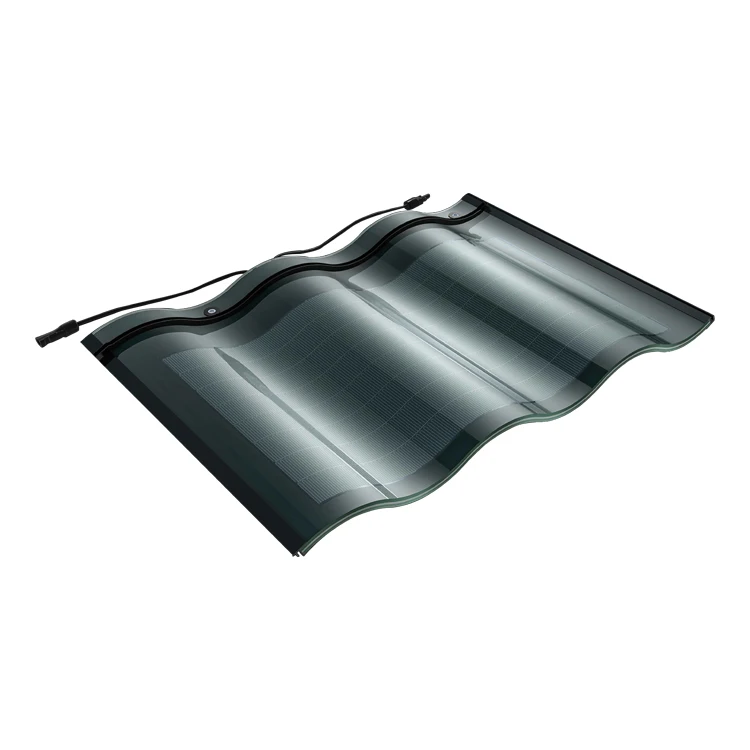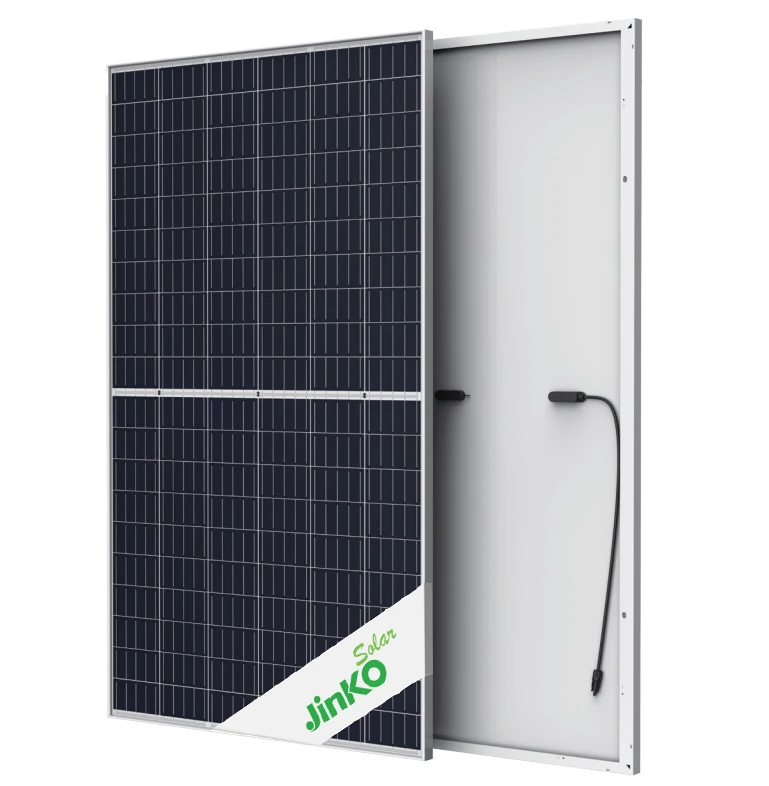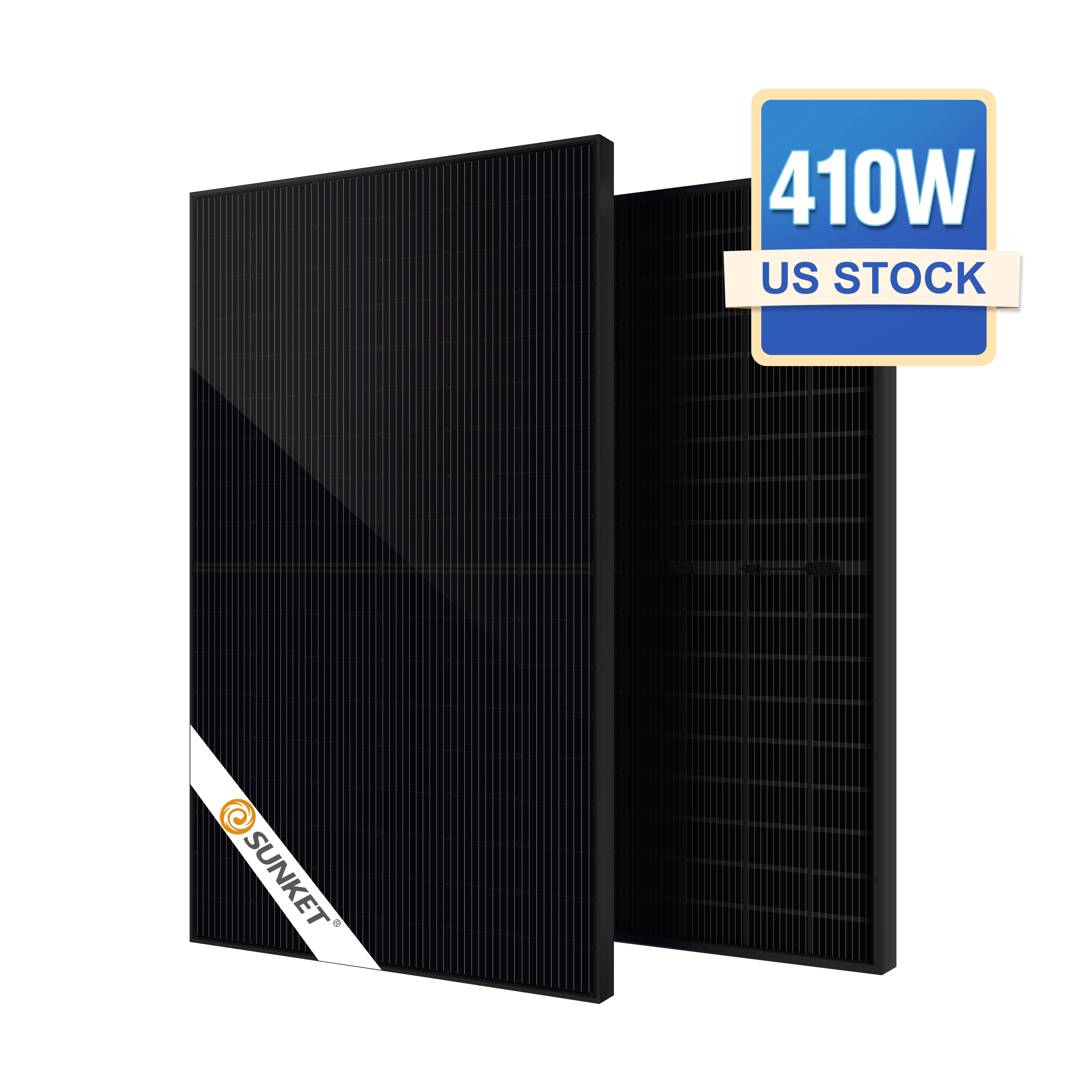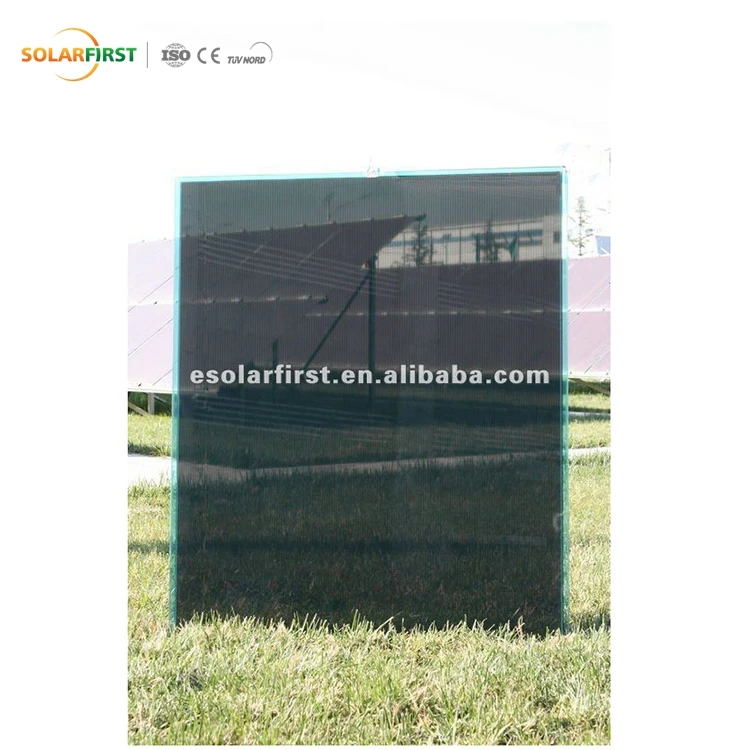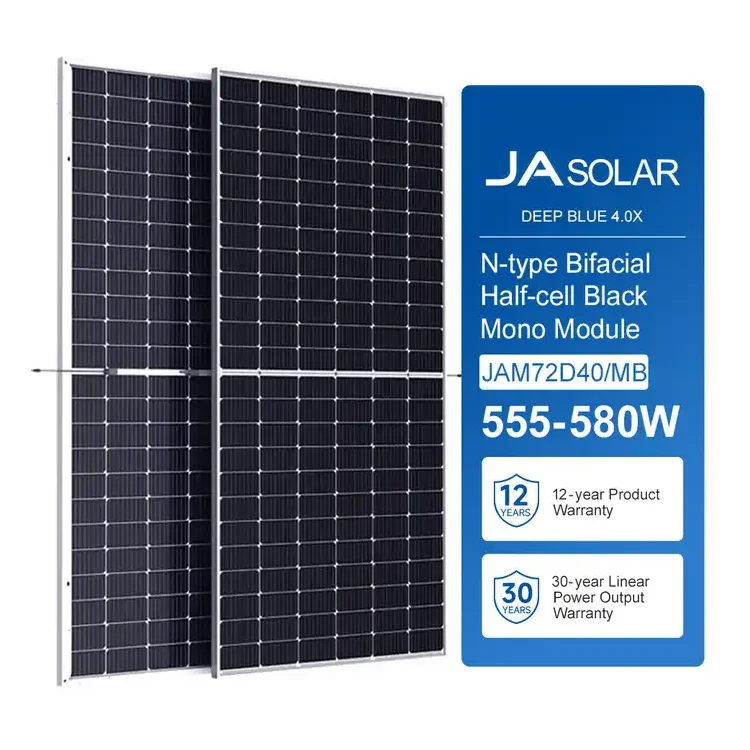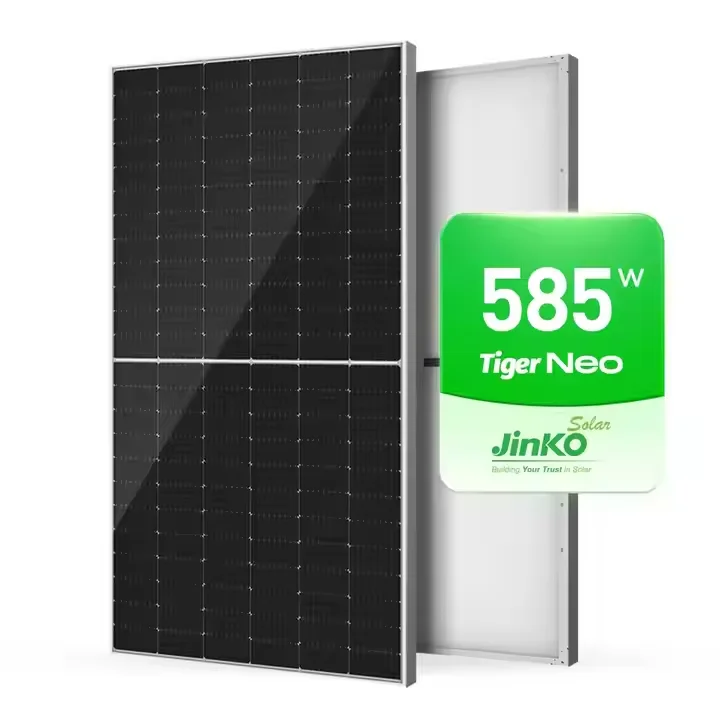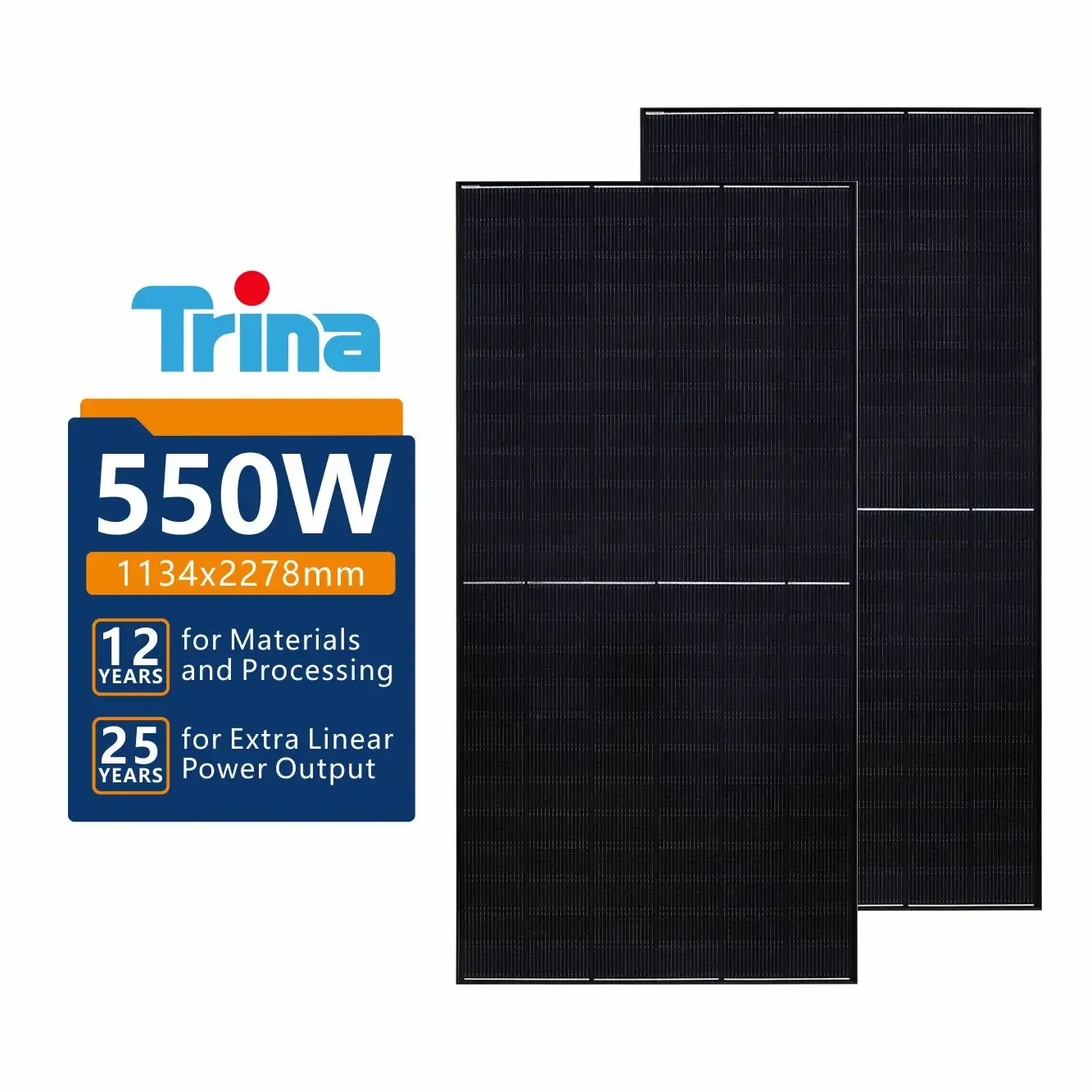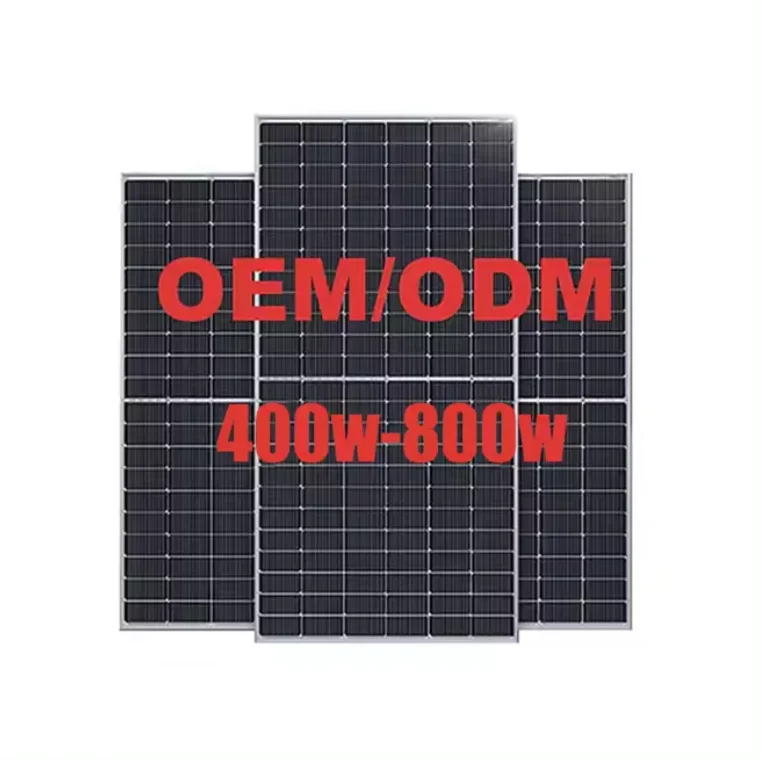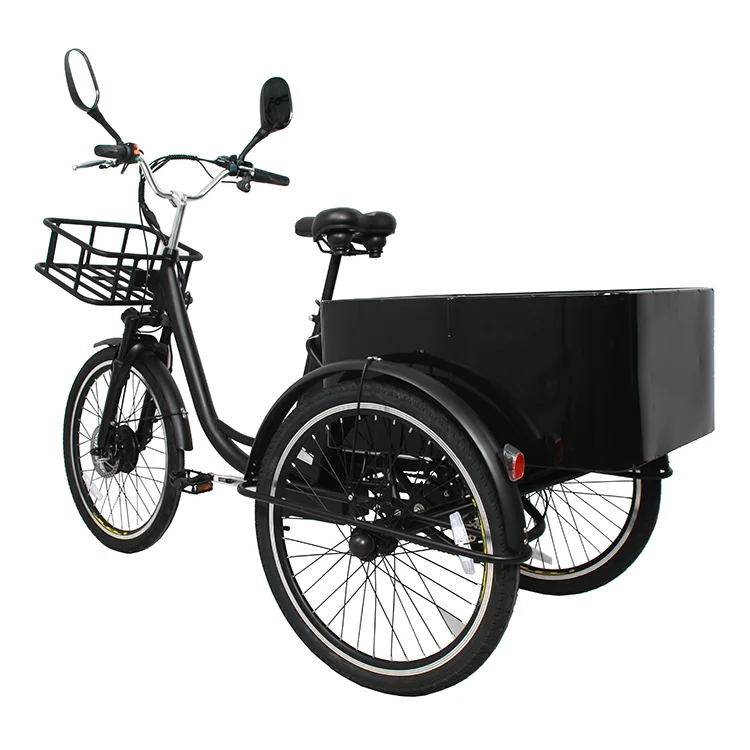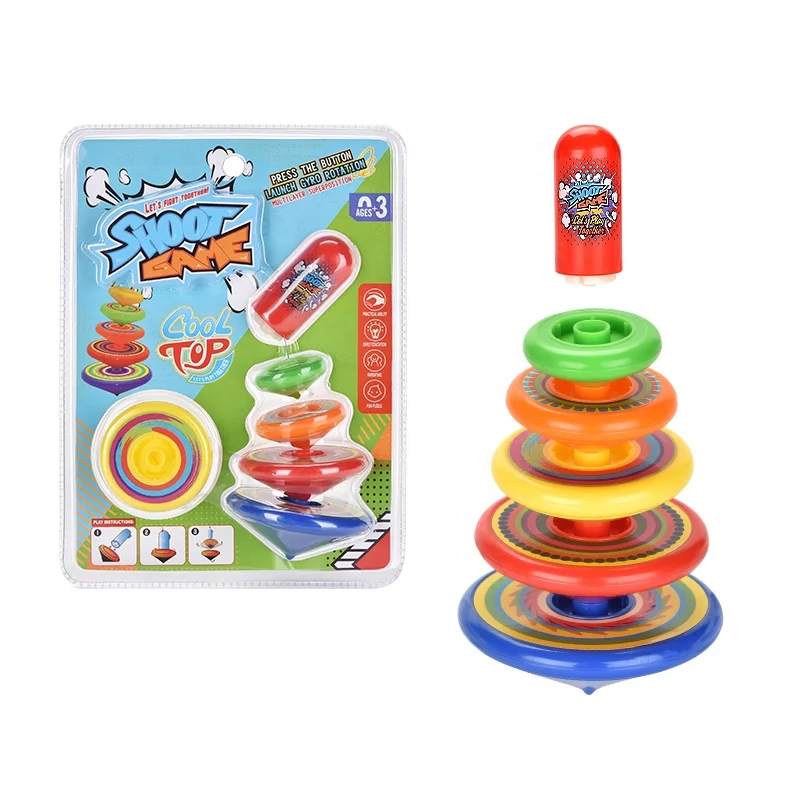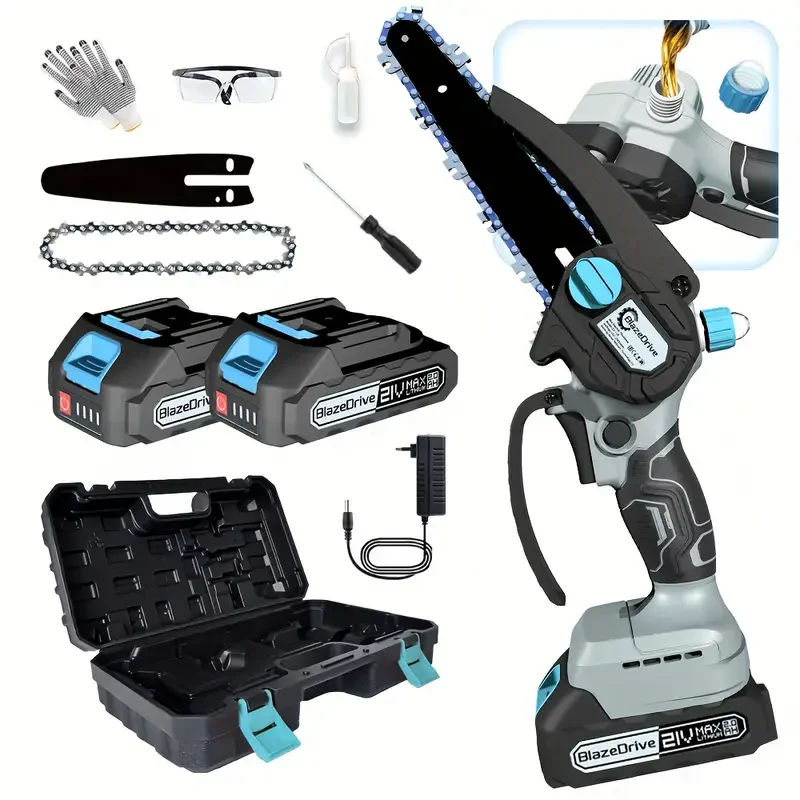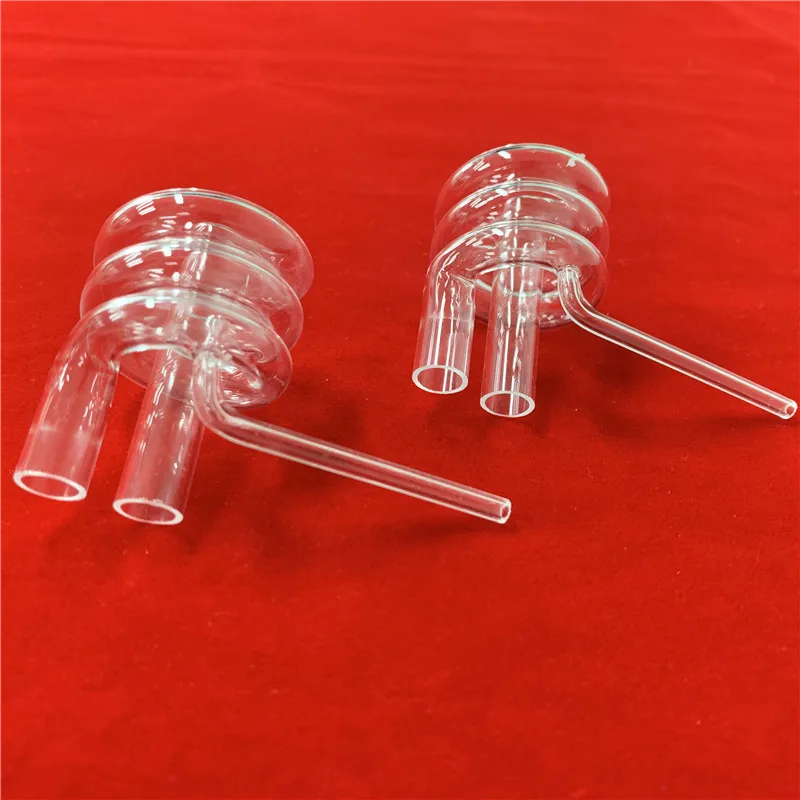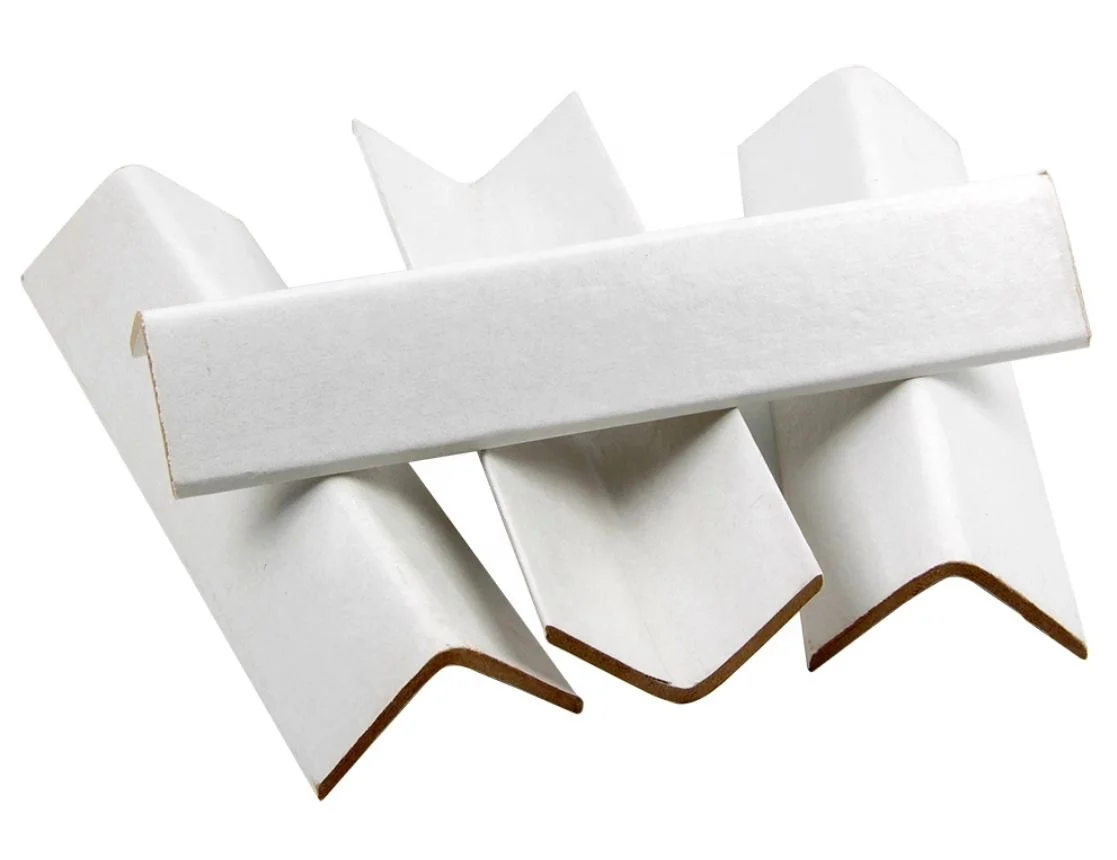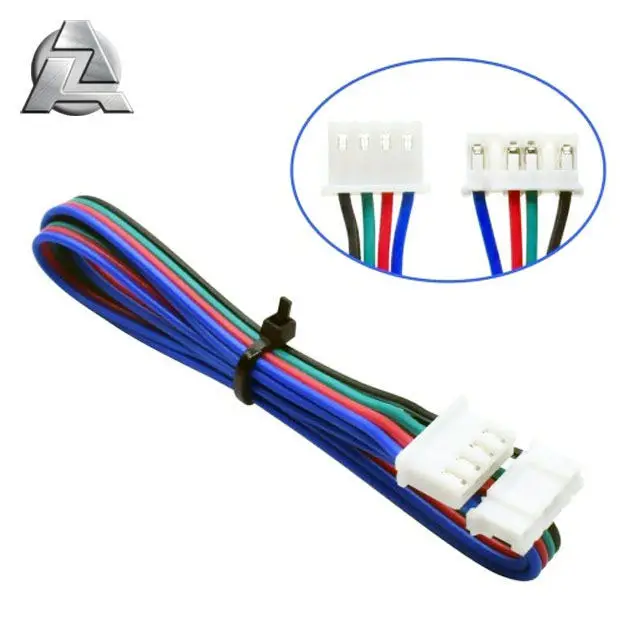2024 black 555 Watts 144 cells Solar Panel Solar PV Module for Home
- Category: >>>
- Supplier: Wuxi Solarepoch Renewable Energy Technologies Co. Ltd.
Share on (1601199514458):
Product Overview
Description








a.Balcony solar
What is balcony solar?
Balcony solar refers to the installation of solar panels or solar energy systems on balconies or terraces of residential or
commercial buildings. It is a form of distributed solar energy generation that allows individuals or businesses to harness solar
power in urban areas where rooftop space may be limited.
Balcony solar systems typically consist of small, lightweight solar panels that are designed to be mounted on the railings or
walls of balconies. These panels capture sunlight and convert it into electricity using photovoltaic (PV) cells. The generated
electricity can be used to power various devices or appliances within the building.
With the balcony solar device, you can convert sunlight into electricity, provide you with green energy supply, charge appliances
at home, charge mobile phones, computers, tablets and other devices, so that you can enjoy the power of the sun whether on the
balcony or indoors!
One advantage of balcony solar is that it enables individuals living in apartments or high-rise buildings to participate in solar
energy generation, even if they don't have access to a rooftop. It offers a decentralized approach to renewable energy, allowing
individuals to generate their own clean electricity and potentially reduce their reliance on the grid.
However, it's important to note that balcony solar systems have certain limitations. The available space on a balcony may be
limited, resulting in smaller solar panel installations and lower energy output compared to traditional rooftop systems.
Additionally, the orientation and shading of the balcony can affect the efficiency of the solar panels.
Overall, balcony solar provides an alternative option for individuals or businesses in urban areas to harness solar energy and
contribute to a more sustainable future.
b.Micro inverter
1.What is micro inverter?
2.What kind of installation requires micro inverter
3.The micro inverter history
4.Could I DIY with micro inverter?
5.Where to buy micro inverter?
c.Solar system
1.What is solar system?
What is balcony solar?
Balcony solar refers to the installation of solar panels or solar energy systems on balconies or terraces of residential or
commercial buildings. It is a form of distributed solar energy generation that allows individuals or businesses to harness solar
power in urban areas where rooftop space may be limited.
Balcony solar systems typically consist of small, lightweight solar panels that are designed to be mounted on the railings or
walls of balconies. These panels capture sunlight and convert it into electricity using photovoltaic (PV) cells. The generated
electricity can be used to power various devices or appliances within the building.
With the balcony solar device, you can convert sunlight into electricity, provide you with green energy supply, charge appliances
at home, charge mobile phones, computers, tablets and other devices, so that you can enjoy the power of the sun whether on the
balcony or indoors!
One advantage of balcony solar is that it enables individuals living in apartments or high-rise buildings to participate in solar
energy generation, even if they don't have access to a rooftop. It offers a decentralized approach to renewable energy, allowing
individuals to generate their own clean electricity and potentially reduce their reliance on the grid.
However, it's important to note that balcony solar systems have certain limitations. The available space on a balcony may be
limited, resulting in smaller solar panel installations and lower energy output compared to traditional rooftop systems.
Additionally, the orientation and shading of the balcony can affect the efficiency of the solar panels.
Overall, balcony solar provides an alternative option for individuals or businesses in urban areas to harness solar energy and
contribute to a more sustainable future.
b.Micro inverter
1.What is micro inverter?
A microinverter is a device used in photovoltaic (PV) systems to convert direct current (DC) electricity generated by individual
solar panels into alternating current (AC) electricity. Unlike traditional string inverters, which are typically connected to
multiple solar panels in series, microinverters are installed on each individual solar panel.
The main components of a microinverter include:
1. DC-to-AC Conversion Circuit: This circuitry within the microinverter converts the DC electricity produced by the solar panel
into AC electricity that can be used to power household appliances or fed back into the electrical grid.
2. Maximum Power Point Tracking (MPPT): Microinverters often incorporate MPPT technology, which optimizes the power output of
each solar panel by continuously tracking the panel's maximum power point. This ensures that the panel operates at its highest
efficiency, even under varying environmental conditions.
3. Monitoring and Communication: Microinverters are typically equipped with monitoring capabilities, allowing users to track the
performance of individual solar panels in real-time. Some microinverters also have communication features that enable them to
transmit data to a central monitoring system or a mobile app for remote monitoring.
4. Safety Features: Microinverters are designed with safety features to protect against electrical hazards. These may include
features such as rapid shutdown functionality, which allows the system to be quickly and safely de-energized in the event of
an emergency or maintenance.
The use of microinverters offers several advantages over string inverters, including increased energy harvest, improved system
flexibility, enhanced monitoring capabilities, and increased reliability. However, microinverters are typically more expensive
than string inverters and may require additional installation and wiring efforts due to their distributed nature.
solar panels into alternating current (AC) electricity. Unlike traditional string inverters, which are typically connected to
multiple solar panels in series, microinverters are installed on each individual solar panel.
The main components of a microinverter include:
1. DC-to-AC Conversion Circuit: This circuitry within the microinverter converts the DC electricity produced by the solar panel
into AC electricity that can be used to power household appliances or fed back into the electrical grid.
2. Maximum Power Point Tracking (MPPT): Microinverters often incorporate MPPT technology, which optimizes the power output of
each solar panel by continuously tracking the panel's maximum power point. This ensures that the panel operates at its highest
efficiency, even under varying environmental conditions.
3. Monitoring and Communication: Microinverters are typically equipped with monitoring capabilities, allowing users to track the
performance of individual solar panels in real-time. Some microinverters also have communication features that enable them to
transmit data to a central monitoring system or a mobile app for remote monitoring.
4. Safety Features: Microinverters are designed with safety features to protect against electrical hazards. These may include
features such as rapid shutdown functionality, which allows the system to be quickly and safely de-energized in the event of
an emergency or maintenance.
The use of microinverters offers several advantages over string inverters, including increased energy harvest, improved system
flexibility, enhanced monitoring capabilities, and increased reliability. However, microinverters are typically more expensive
than string inverters and may require additional installation and wiring efforts due to their distributed nature.
2.What kind of installation requires micro inverter
Microinverters are commonly used in residential and small-scale commercial solar installations. They are particularly suitable for
installations that have the following characteristics:
1. Shading Issues: If your solar array is subject to shading from nearby trees, buildings, or other obstructions, microinverters
can be beneficial. With microinverters, each solar panel operates independently, so shading on one panel does not
significantly affect the performance of the entire system. This allows for better energy production in partially shaded
conditions.
2. Complex or Irregular Roof Layouts: If your roof has multiple orientations, varying tilt angles, or irregular shapes,
microinverters can be advantageous. Since each panel has its own microinverter, you can install panels in different
orientations and angles without compromising the overall system's performance.
3. System Expansion Flexibility: Microinverters offer greater flexibility for system expansion. If you plan to add more solar
panels to your existing system in the future, microinverters allow you to easily integrate additional panels without the need
to reconfigure the entire system. This makes it more convenient and cost-effective to expand your solar installation.
4. Monitoring and Panel-Level Data: Microinverters provide panel-level monitoring, allowing you to monitor the performance of
each individual solar panel. This detailed monitoring data helps identify any issues or inefficiencies at the panel level and
allows for better system maintenance and optimization.
5. Safety Considerations: Microinverters offer enhanced safety features compared to string inverters. They typically have rapid
shutdown functionality, which allows the system to be quickly and safely de-energized in case of emergencies or maintenance.
This can be particularly important for residential installations where safety is a priority.
It's worth noting that microinverters may have a higher upfront cost compared to string inverters, and the installation and wiring
process may be more complex. Therefore, it's recommended to consult with a professional solar installer to assess your specific
needs and determine if microinverters are the right choice for your installation.
installations that have the following characteristics:
1. Shading Issues: If your solar array is subject to shading from nearby trees, buildings, or other obstructions, microinverters
can be beneficial. With microinverters, each solar panel operates independently, so shading on one panel does not
significantly affect the performance of the entire system. This allows for better energy production in partially shaded
conditions.
2. Complex or Irregular Roof Layouts: If your roof has multiple orientations, varying tilt angles, or irregular shapes,
microinverters can be advantageous. Since each panel has its own microinverter, you can install panels in different
orientations and angles without compromising the overall system's performance.
3. System Expansion Flexibility: Microinverters offer greater flexibility for system expansion. If you plan to add more solar
panels to your existing system in the future, microinverters allow you to easily integrate additional panels without the need
to reconfigure the entire system. This makes it more convenient and cost-effective to expand your solar installation.
4. Monitoring and Panel-Level Data: Microinverters provide panel-level monitoring, allowing you to monitor the performance of
each individual solar panel. This detailed monitoring data helps identify any issues or inefficiencies at the panel level and
allows for better system maintenance and optimization.
5. Safety Considerations: Microinverters offer enhanced safety features compared to string inverters. They typically have rapid
shutdown functionality, which allows the system to be quickly and safely de-energized in case of emergencies or maintenance.
This can be particularly important for residential installations where safety is a priority.
It's worth noting that microinverters may have a higher upfront cost compared to string inverters, and the installation and wiring
process may be more complex. Therefore, it's recommended to consult with a professional solar installer to assess your specific
needs and determine if microinverters are the right choice for your installation.
3.The micro inverter history
Microinverters have a relatively recent history compared to other types of inverters used in solar PV systems. Here is a brief
overview of the development and history of microinverters:
1. Early Development: The concept of microinverters began to emerge in the early 1990s. Companies like Ascension Technology and
Enphase Energy started developing microinverter technology as an alternative to traditional string inverters. These early
microinverters aimed to address the limitations of string inverters, such as shading issues and the impact of panel-level
variations on system performance.
2. Commercialization: In the mid-2000s, Enphase Energy, founded in 2006, played a significant role in commercializing
microinverters. Enphase introduced its first microinverter, the M175, in 2008. This product gained attention in the solar
industry for its ability to enhance system performance and simplify installation.
3. Market Adoption: Microinverters gained popularity due to their advantages in handling shading, system monitoring, and
panel-level optimization. The residential solar market, in particular, embraced microinverters as a solution for maximizing
energy production in challenging installation scenarios.
4. Technological Advancements: Over the years, microinverter technology has evolved and improved. Manufacturers have focused on
increasing efficiency, reliability, and integrating advanced monitoring and communication features. Microinverters now offer
higher power output, improved thermal management, and enhanced grid compatibility.
5. Market Expansion: The adoption of microinverters expanded beyond residential installations to include small-scale commercial
projects. Their benefits in complex roof layouts, shading conditions, and system scalability made them attractive for a wider
range of applications.
6. Competitive Landscape: As the microinverter market grew, other manufacturers entered the space, offering their own
microinverter solutions. Companies like SolarEdge, SMA, and APsystems have developed microinverters or power optimizer
solutions, providing customers with more options and driving further innovation and competition in the market.
Today, microinverters continue to be a popular choice for residential and small-scale commercial solar installations. They have
become an integral part of the solar industry, offering enhanced performance, monitoring capabilities, and system flexibility.
Ongoing advancements in microinverter technology are expected to further improve their efficiency, reliability, and
cost-effectiveness in the future.
overview of the development and history of microinverters:
1. Early Development: The concept of microinverters began to emerge in the early 1990s. Companies like Ascension Technology and
Enphase Energy started developing microinverter technology as an alternative to traditional string inverters. These early
microinverters aimed to address the limitations of string inverters, such as shading issues and the impact of panel-level
variations on system performance.
2. Commercialization: In the mid-2000s, Enphase Energy, founded in 2006, played a significant role in commercializing
microinverters. Enphase introduced its first microinverter, the M175, in 2008. This product gained attention in the solar
industry for its ability to enhance system performance and simplify installation.
3. Market Adoption: Microinverters gained popularity due to their advantages in handling shading, system monitoring, and
panel-level optimization. The residential solar market, in particular, embraced microinverters as a solution for maximizing
energy production in challenging installation scenarios.
4. Technological Advancements: Over the years, microinverter technology has evolved and improved. Manufacturers have focused on
increasing efficiency, reliability, and integrating advanced monitoring and communication features. Microinverters now offer
higher power output, improved thermal management, and enhanced grid compatibility.
5. Market Expansion: The adoption of microinverters expanded beyond residential installations to include small-scale commercial
projects. Their benefits in complex roof layouts, shading conditions, and system scalability made them attractive for a wider
range of applications.
6. Competitive Landscape: As the microinverter market grew, other manufacturers entered the space, offering their own
microinverter solutions. Companies like SolarEdge, SMA, and APsystems have developed microinverters or power optimizer
solutions, providing customers with more options and driving further innovation and competition in the market.
Today, microinverters continue to be a popular choice for residential and small-scale commercial solar installations. They have
become an integral part of the solar industry, offering enhanced performance, monitoring capabilities, and system flexibility.
Ongoing advancements in microinverter technology are expected to further improve their efficiency, reliability, and
cost-effectiveness in the future.
4.Could I DIY with micro inverter?
While it is technically possible to install microinverters yourself (DIY), it is generally recommended to hire a professional
solar installer for several reasons:
1. Electrical Safety: Solar installations involve working with high-voltage DC electricity. Without proper knowledge and
experience, there is a risk of electrical shock or other safety hazards. Professional installers are trained to handle
electrical components safely and ensure compliance with local electrical codes and regulations.
2. System Design and Sizing: Designing a solar system involves assessing factors such as roof orientation, shading analysis,
panel placement, and electrical load requirements. Professional installers have the expertise to optimize system design and
size it correctly to maximize energy production and efficiency.
3. Permitting and Interconnection: Solar installations often require permits and approvals from local authorities and utility
companies. Professional installers are familiar with the permitting process and can handle the paperwork and coordination with
the necessary entities.
4. Warranty and Support: Many microinverter manufacturers offer warranties that may require professional installation for the
warranty to be valid. Additionally, professional installers can provide ongoing support and maintenance for the system,
ensuring its long-term performance.
5. Cost Considerations: While DIY installation may seem cost-effective initially, mistakes or improper installation can lead to
inefficiencies, reduced energy production, and potential system failures. These issues can be costly to fix later on. Hiring a
professional installer can help avoid such problems and ensure a well-functioning and reliable solar system.
If you are considering a solar installation with microinverters, it is recommended to consult with professional solar installers
in your area. They can assess your specific needs, provide accurate system design, handle the installation process, and ensure
compliance with safety standards and regulations.
solar installer for several reasons:
1. Electrical Safety: Solar installations involve working with high-voltage DC electricity. Without proper knowledge and
experience, there is a risk of electrical shock or other safety hazards. Professional installers are trained to handle
electrical components safely and ensure compliance with local electrical codes and regulations.
2. System Design and Sizing: Designing a solar system involves assessing factors such as roof orientation, shading analysis,
panel placement, and electrical load requirements. Professional installers have the expertise to optimize system design and
size it correctly to maximize energy production and efficiency.
3. Permitting and Interconnection: Solar installations often require permits and approvals from local authorities and utility
companies. Professional installers are familiar with the permitting process and can handle the paperwork and coordination with
the necessary entities.
4. Warranty and Support: Many microinverter manufacturers offer warranties that may require professional installation for the
warranty to be valid. Additionally, professional installers can provide ongoing support and maintenance for the system,
ensuring its long-term performance.
5. Cost Considerations: While DIY installation may seem cost-effective initially, mistakes or improper installation can lead to
inefficiencies, reduced energy production, and potential system failures. These issues can be costly to fix later on. Hiring a
professional installer can help avoid such problems and ensure a well-functioning and reliable solar system.
If you are considering a solar installation with microinverters, it is recommended to consult with professional solar installers
in your area. They can assess your specific needs, provide accurate system design, handle the installation process, and ensure
compliance with safety standards and regulations.
5.Where to buy micro inverter?
Microinverters can be purchased from various sources, including:
1. Solar Equipment Suppliers: Many dedicated solar equipment suppliers and distributors offer microinverters for sale. These
companies specialize in providing a wide range of solar components, including microinverters, inverters, solar panels, and
other related equipment. Some well-known solar equipment suppliers include Wholesale Solar, Solar Electric Supply, and altE
Store.
2. Online Marketplaces: Online marketplaces like Amazon, eBay, and Alibaba also offer a wide selection of microinverters. These
platforms provide a convenient way to browse and compare different brands and models, read customer reviews, and make
purchases online. It's important to check the seller's reputation, product specifications, and customer reviews before making
a purchase.
3. Manufacturer Websites: Many microinverter manufacturers have their own websites where you can purchase their products
directly. Companies like Enphase Energy, SolarEdge, SMA, APsystems, and others have online stores where you can buy their
microinverters and related products.
4. Local Solar Installers: Some solar installers also sell microinverters directly to customers. If you are planning to hire a
professional installer for your solar project, they may offer microinverters as part of their installation package or as
standalone components.
When purchasing microinverters, it's important to consider factors like the brand reputation, product specifications, warranty
terms, and compatibility with your specific solar panel setup. It's also a good idea to compare prices from different sources and
consider any additional services or support offered by the seller.
1. Solar Equipment Suppliers: Many dedicated solar equipment suppliers and distributors offer microinverters for sale. These
companies specialize in providing a wide range of solar components, including microinverters, inverters, solar panels, and
other related equipment. Some well-known solar equipment suppliers include Wholesale Solar, Solar Electric Supply, and altE
Store.
2. Online Marketplaces: Online marketplaces like Amazon, eBay, and Alibaba also offer a wide selection of microinverters. These
platforms provide a convenient way to browse and compare different brands and models, read customer reviews, and make
purchases online. It's important to check the seller's reputation, product specifications, and customer reviews before making
a purchase.
3. Manufacturer Websites: Many microinverter manufacturers have their own websites where you can purchase their products
directly. Companies like Enphase Energy, SolarEdge, SMA, APsystems, and others have online stores where you can buy their
microinverters and related products.
4. Local Solar Installers: Some solar installers also sell microinverters directly to customers. If you are planning to hire a
professional installer for your solar project, they may offer microinverters as part of their installation package or as
standalone components.
When purchasing microinverters, it's important to consider factors like the brand reputation, product specifications, warranty
terms, and compatibility with your specific solar panel setup. It's also a good idea to compare prices from different sources and
consider any additional services or support offered by the seller.
c.Solar system
1.What is solar system?
A solar system refers to a system that harnesses solar energy to generate electricity or provide other forms of energy for
residential, commercial, or industrial purposes. It typically consists of solar panels, inverters, mounting structures, wiring,
and other components that work together to convert sunlight into usable energy.
Here's a breakdown of the main components in a solar system:
1. Solar Panels (Photovoltaic Modules): Solar panels are the most recognizable part of a solar system. They consist of multiple
photovoltaic (PV) cells made of semiconductor materials, usually silicon. When sunlight hits these cells, they generate direct
current (DC) electricity through the photovoltaic effect.
2. Inverters: The DC electricity produced by the solar panels needs to be converted into alternating current (AC) electricity,
which is the type of electricity used in most homes and businesses. Inverters perform this conversion. They also optimize the
performance of the solar system, monitor energy production, and enable system integration with the electrical grid.
3. Mounting Structures: Solar panels need to be securely mounted on rooftops, ground-mounted structures, or other suitable
locations. Mounting structures provide the necessary support and orientation for solar panels to capture sunlight efficiently.
They should be designed to withstand environmental conditions and ensure proper panel alignment.
4. Wiring and Connectors: Electrical wiring connects the solar panels to the inverter and other system components. Proper wiring
and connectors ensure the safe and efficient transfer of electricity within the solar system. Wiring should be sized
appropriately to handle the current generated by the panels and comply with electrical codes and safety standards.
5. Monitoring and Control Systems: Many solar systems include monitoring and control systems that allow users to track the
performance of the system, monitor energy production, and identify any issues or faults. These systems provide real-time data
on energy generation, system efficiency, and overall performance.
6. Energy Storage (Optional): Some solar systems incorporate energy storage solutions, such as batteries, to store excess
electricity generated during the day for use during periods of low or no sunlight. Energy storage systems can enhance the
self-consumption of solar energy and provide backup power during grid outages.
7. Electrical Grid Connection: Solar systems can be connected to the electrical grid, allowing excess electricity to be fed back
into the grid in a process known as net metering or feed-in tariff. This enables users to receive credit or compensation for
the electricity they generate but do not consume. Grid-connected solar systems can also draw electricity from the grid when
solar production is insufficient.
Solar systems are a sustainable and renewable energy solution that helps reduce reliance on fossil fuels and mitigates greenhouse
gas emissions. They offer an environmentally friendly way to generate electricity and contribute to a more sustainable energy
future.
2.What is solar module?
residential, commercial, or industrial purposes. It typically consists of solar panels, inverters, mounting structures, wiring,
and other components that work together to convert sunlight into usable energy.
Here's a breakdown of the main components in a solar system:
1. Solar Panels (Photovoltaic Modules): Solar panels are the most recognizable part of a solar system. They consist of multiple
photovoltaic (PV) cells made of semiconductor materials, usually silicon. When sunlight hits these cells, they generate direct
current (DC) electricity through the photovoltaic effect.
2. Inverters: The DC electricity produced by the solar panels needs to be converted into alternating current (AC) electricity,
which is the type of electricity used in most homes and businesses. Inverters perform this conversion. They also optimize the
performance of the solar system, monitor energy production, and enable system integration with the electrical grid.
3. Mounting Structures: Solar panels need to be securely mounted on rooftops, ground-mounted structures, or other suitable
locations. Mounting structures provide the necessary support and orientation for solar panels to capture sunlight efficiently.
They should be designed to withstand environmental conditions and ensure proper panel alignment.
4. Wiring and Connectors: Electrical wiring connects the solar panels to the inverter and other system components. Proper wiring
and connectors ensure the safe and efficient transfer of electricity within the solar system. Wiring should be sized
appropriately to handle the current generated by the panels and comply with electrical codes and safety standards.
5. Monitoring and Control Systems: Many solar systems include monitoring and control systems that allow users to track the
performance of the system, monitor energy production, and identify any issues or faults. These systems provide real-time data
on energy generation, system efficiency, and overall performance.
6. Energy Storage (Optional): Some solar systems incorporate energy storage solutions, such as batteries, to store excess
electricity generated during the day for use during periods of low or no sunlight. Energy storage systems can enhance the
self-consumption of solar energy and provide backup power during grid outages.
7. Electrical Grid Connection: Solar systems can be connected to the electrical grid, allowing excess electricity to be fed back
into the grid in a process known as net metering or feed-in tariff. This enables users to receive credit or compensation for
the electricity they generate but do not consume. Grid-connected solar systems can also draw electricity from the grid when
solar production is insufficient.
Solar systems are a sustainable and renewable energy solution that helps reduce reliance on fossil fuels and mitigates greenhouse
gas emissions. They offer an environmentally friendly way to generate electricity and contribute to a more sustainable energy
future.
2.What is solar module?
A solar module, also known as a photovoltaic module or solar panel, is a key component of a solar power system. It is an assembly
of interconnected solar cells that convert sunlight into electricity using the photovoltaic effect.
Here are some important aspects of solar modules:
1. Solar Cells: Solar modules are made up of multiple solar cells, typically made of silicon or other semiconductor materials.
These cells are responsible for converting sunlight into electrical energy. When sunlight strikes the solar cells, it excites
the electrons within the cells, creating a flow of direct current (DC) electricity.
2. Encapsulation: Solar cells are encapsulated within a protective layer to ensure their durability and longevity. The
encapsulation material is typically made of ethylene-vinyl acetate (EVA) or a similar transparent polymer. It protects the
solar cells from moisture, dust, and other environmental factors while allowing sunlight to pass through.
3. Glass or Transparent Cover: Solar modules usually have a glass or transparent cover on the front side. This cover protects
the solar cells from physical damage while allowing sunlight to penetrate. The glass is tempered to withstand weather
conditions and enhance the module's structural integrity.
4. Backsheet: The backside of a solar module is covered with a backsheet, which is a protective layer that provides electrical
insulation and prevents moisture ingress. The backsheet is typically made of a polymer material that is resistant to
ultraviolet (UV) radiation and weathering.
5. Frame: Solar modules often feature an aluminum frame that surrounds the edges. The frame provides structural support and
rigidity to the module, protecting it from mechanical stress, such as wind and snow loads. The frame also facilitates easy
installation and mounting of the module onto rooftops or other structures.
6. Junction Box: Solar modules have a junction box on the backside, which houses electrical connections and wiring. The junction
box allows for the safe and secure connection of the solar module to other system components, such as inverters and wiring
conduits.
7. Electrical Connectors: Solar modules are equipped with electrical connectors, typically called MC4 connectors, that enable
easy and reliable interconnection between modules. These connectors ensure proper electrical contact and facilitate the series
or parallel wiring of multiple modules to form a solar array.
Solar modules come in various sizes, wattages, and efficiencies. The power output of a solar module is determined by factors such
as the number and efficiency of the solar cells it contains. When multiple solar modules are connected together, they form a solar
array that generates electricity for various applications, including residential, commercial, and utility-scale solar power
systems.
3.What is solar pannel?
of interconnected solar cells that convert sunlight into electricity using the photovoltaic effect.
Here are some important aspects of solar modules:
1. Solar Cells: Solar modules are made up of multiple solar cells, typically made of silicon or other semiconductor materials.
These cells are responsible for converting sunlight into electrical energy. When sunlight strikes the solar cells, it excites
the electrons within the cells, creating a flow of direct current (DC) electricity.
2. Encapsulation: Solar cells are encapsulated within a protective layer to ensure their durability and longevity. The
encapsulation material is typically made of ethylene-vinyl acetate (EVA) or a similar transparent polymer. It protects the
solar cells from moisture, dust, and other environmental factors while allowing sunlight to pass through.
3. Glass or Transparent Cover: Solar modules usually have a glass or transparent cover on the front side. This cover protects
the solar cells from physical damage while allowing sunlight to penetrate. The glass is tempered to withstand weather
conditions and enhance the module's structural integrity.
4. Backsheet: The backside of a solar module is covered with a backsheet, which is a protective layer that provides electrical
insulation and prevents moisture ingress. The backsheet is typically made of a polymer material that is resistant to
ultraviolet (UV) radiation and weathering.
5. Frame: Solar modules often feature an aluminum frame that surrounds the edges. The frame provides structural support and
rigidity to the module, protecting it from mechanical stress, such as wind and snow loads. The frame also facilitates easy
installation and mounting of the module onto rooftops or other structures.
6. Junction Box: Solar modules have a junction box on the backside, which houses electrical connections and wiring. The junction
box allows for the safe and secure connection of the solar module to other system components, such as inverters and wiring
conduits.
7. Electrical Connectors: Solar modules are equipped with electrical connectors, typically called MC4 connectors, that enable
easy and reliable interconnection between modules. These connectors ensure proper electrical contact and facilitate the series
or parallel wiring of multiple modules to form a solar array.
Solar modules come in various sizes, wattages, and efficiencies. The power output of a solar module is determined by factors such
as the number and efficiency of the solar cells it contains. When multiple solar modules are connected together, they form a solar
array that generates electricity for various applications, including residential, commercial, and utility-scale solar power
systems.
3.What is solar pannel?
A solar panel, or photovoltaic panel, is a device that converts sunlight into electricity using the photovoltaic effect. It is
composed of multiple interconnected solar cells, typically made of silicon or other semiconductor materials. When sunlight strikes
the solar cells, it generates an electric current, producing direct current (DC) electricity.
Solar panels are the most recognizable component of a solar power system. They are designed to capture sunlight and convert it
into usable electrical energy. Solar panels are usually rectangular in shape and consist of several solar cells connected in
series or parallel to achieve the desired voltage and current output.
Here are some key features of solar panels:
1. Solar Cells: Solar panels are made up of individual solar cells, which are responsible for converting sunlight into
electricity. These cells are typically made of silicon, though other materials like thin-film solar cells are also used. The
solar cells contain semiconductor materials that generate an electric current when exposed to sunlight.
2. Encapsulation: Solar cells within the panel are encapsulated in a protective layer to ensure their durability and longevity.
This encapsulation material is usually ethylene-vinyl acetate (EVA) or a similar transparent polymer. It protects the solar
cells from moisture, dust, and other environmental factors while allowing sunlight to pass through.
3. Glass or Transparent Cover: The front side of a solar panel is covered with a glass or transparent cover. This cover protects
the solar cells from physical damage while allowing sunlight to reach the cells. The glass is typically tempered to withstand
weather conditions and enhance the panel's structural integrity.
4. Backsheet: The backside of a solar panel is covered with a backsheet, which provides electrical insulation and protects
against moisture ingress. The backsheet is usually made of a polymer material resistant to UV radiation and weathering.
5. Frame: Solar panels often feature an aluminum frame that surrounds the edges. The frame provides structural support and
rigidity to the panel, protecting it from mechanical stress, such as wind and snow loads. The frame also facilitates easy
installation and mounting of the panel onto rooftops or other structures.
6. Junction Box: A solar panel has a junction box on the backside, which houses electrical connections and wiring. The junction
box allows for the safe and secure connection of the solar panel to other system components, such as inverters and wiring
conduits.
Solar panels come in various sizes, wattages, and efficiencies. The power output of a solar panel depends on factors such as the
number and efficiency of the solar cells it contains. Multiple solar panels can be connected together to form a solar array, which
generates electricity for various applications, including residential, commercial, and utility-scale solar power systems.
4.What is mounting system?
composed of multiple interconnected solar cells, typically made of silicon or other semiconductor materials. When sunlight strikes
the solar cells, it generates an electric current, producing direct current (DC) electricity.
Solar panels are the most recognizable component of a solar power system. They are designed to capture sunlight and convert it
into usable electrical energy. Solar panels are usually rectangular in shape and consist of several solar cells connected in
series or parallel to achieve the desired voltage and current output.
Here are some key features of solar panels:
1. Solar Cells: Solar panels are made up of individual solar cells, which are responsible for converting sunlight into
electricity. These cells are typically made of silicon, though other materials like thin-film solar cells are also used. The
solar cells contain semiconductor materials that generate an electric current when exposed to sunlight.
2. Encapsulation: Solar cells within the panel are encapsulated in a protective layer to ensure their durability and longevity.
This encapsulation material is usually ethylene-vinyl acetate (EVA) or a similar transparent polymer. It protects the solar
cells from moisture, dust, and other environmental factors while allowing sunlight to pass through.
3. Glass or Transparent Cover: The front side of a solar panel is covered with a glass or transparent cover. This cover protects
the solar cells from physical damage while allowing sunlight to reach the cells. The glass is typically tempered to withstand
weather conditions and enhance the panel's structural integrity.
4. Backsheet: The backside of a solar panel is covered with a backsheet, which provides electrical insulation and protects
against moisture ingress. The backsheet is usually made of a polymer material resistant to UV radiation and weathering.
5. Frame: Solar panels often feature an aluminum frame that surrounds the edges. The frame provides structural support and
rigidity to the panel, protecting it from mechanical stress, such as wind and snow loads. The frame also facilitates easy
installation and mounting of the panel onto rooftops or other structures.
6. Junction Box: A solar panel has a junction box on the backside, which houses electrical connections and wiring. The junction
box allows for the safe and secure connection of the solar panel to other system components, such as inverters and wiring
conduits.
Solar panels come in various sizes, wattages, and efficiencies. The power output of a solar panel depends on factors such as the
number and efficiency of the solar cells it contains. Multiple solar panels can be connected together to form a solar array, which
generates electricity for various applications, including residential, commercial, and utility-scale solar power systems.
4.What is mounting system?
A mounting system, in the context of solar power systems, refers to the structure or framework used to secure and install solar
panels in a fixed position. It plays a crucial role in supporting the solar panels, ensuring their stability, and optimizing their
performance. The mounting system provides a secure foundation for the solar panels and allows for proper orientation and tilt
angle to maximize sunlight exposure.
Here are some key aspects of a solar panel mounting system:
1. Racking or Mounting Structure: The mounting system includes a racking or mounting structure that serves as the framework to
support the solar panels. It is typically made of aluminum or steel and is designed to withstand the weight of the panels,
wind loads, and other environmental factors. The racking structure is engineered to be durable, corrosion-resistant, and
capable of withstanding various weather conditions.
2. Roof Mounting: For rooftop solar installations, the mounting system is designed to attach the solar panels securely to the
roof. Different types of roof mounts are available, such as flush mounts, tilted mounts, and ballasted mounts, depending on
the roof type and structure. Roof mounts often use clamps or brackets to secure the panels to the roof surface without
compromising the integrity of the roof.
3. Ground Mounting: In ground-mounted solar installations, the mounting system is used to secure the solar panels to the ground.
Ground mounts typically consist of metal posts or frames that are anchored into the ground. They allow for adjustable tilt
angles and orientation to optimize solar exposure. Ground-mounted systems are commonly used in large-scale solar
installations, where ample land is available.
4. Tracking Systems: Some advanced solar installations use tracking systems as part of the mounting system. Tracking systems
allow solar panels to follow the path of the sun throughout the day, maximizing the amount of sunlight they receive. There are
two main types of tracking systems: single-axis and dual-axis trackers. Single-axis trackers move the panels along one axis
(usually east to west), while dual-axis trackers can move the panels along both horizontal and vertical axes.
5. Wiring and Cable Management: The mounting system incorporates provisions for proper wiring and cable management. It includes
cable clips, conduits, or channels to route and protect the electrical wiring from the solar panels to the junction boxes and
inverters. Wiring and cable management ensure a neat and organized installation while minimizing the risk of damage to the
cables.
6. Compliance with Standards: A reliable mounting system should comply with relevant industry standards and local building codes
to ensure safety and structural integrity. It is important to use mounting systems that have been tested and certified for
their load-bearing capacity, wind resistance, and durability.
The choice of a mounting system depends on various factors, including the type of installation (roof or ground), the available
space, local regulations, and the specific requirements of the solar project. Proper installation and alignment of the solar
panels using a robust mounting system are essential for maximizing energy production and ensuring the long-term performance of the
solar power system.
5.What is gridding?
panels in a fixed position. It plays a crucial role in supporting the solar panels, ensuring their stability, and optimizing their
performance. The mounting system provides a secure foundation for the solar panels and allows for proper orientation and tilt
angle to maximize sunlight exposure.
Here are some key aspects of a solar panel mounting system:
1. Racking or Mounting Structure: The mounting system includes a racking or mounting structure that serves as the framework to
support the solar panels. It is typically made of aluminum or steel and is designed to withstand the weight of the panels,
wind loads, and other environmental factors. The racking structure is engineered to be durable, corrosion-resistant, and
capable of withstanding various weather conditions.
2. Roof Mounting: For rooftop solar installations, the mounting system is designed to attach the solar panels securely to the
roof. Different types of roof mounts are available, such as flush mounts, tilted mounts, and ballasted mounts, depending on
the roof type and structure. Roof mounts often use clamps or brackets to secure the panels to the roof surface without
compromising the integrity of the roof.
3. Ground Mounting: In ground-mounted solar installations, the mounting system is used to secure the solar panels to the ground.
Ground mounts typically consist of metal posts or frames that are anchored into the ground. They allow for adjustable tilt
angles and orientation to optimize solar exposure. Ground-mounted systems are commonly used in large-scale solar
installations, where ample land is available.
4. Tracking Systems: Some advanced solar installations use tracking systems as part of the mounting system. Tracking systems
allow solar panels to follow the path of the sun throughout the day, maximizing the amount of sunlight they receive. There are
two main types of tracking systems: single-axis and dual-axis trackers. Single-axis trackers move the panels along one axis
(usually east to west), while dual-axis trackers can move the panels along both horizontal and vertical axes.
5. Wiring and Cable Management: The mounting system incorporates provisions for proper wiring and cable management. It includes
cable clips, conduits, or channels to route and protect the electrical wiring from the solar panels to the junction boxes and
inverters. Wiring and cable management ensure a neat and organized installation while minimizing the risk of damage to the
cables.
6. Compliance with Standards: A reliable mounting system should comply with relevant industry standards and local building codes
to ensure safety and structural integrity. It is important to use mounting systems that have been tested and certified for
their load-bearing capacity, wind resistance, and durability.
The choice of a mounting system depends on various factors, including the type of installation (roof or ground), the available
space, local regulations, and the specific requirements of the solar project. Proper installation and alignment of the solar
panels using a robust mounting system are essential for maximizing energy production and ensuring the long-term performance of the
solar power system.
5.What is gridding?
When a solar power system is "grid-tied," it means that it is connected to the local electrical grid operated by the utility
company. This connection allows the solar system to interact with the grid, both receiving electricity from the grid when the
solar panels are not producing enough power and sending excess electricity back to the grid when the panels generate more power
than is being consumed.
The process of grid connection involves installing appropriate equipment such as inverters and meters that enable the
bidirectional flow of electricity between the solar system and the grid. This allows the solar system owner to take advantage of
net metering or feed-in tariff programs, where excess electricity can be credited or sold back to the utility.
Grid-tied solar systems are the most common type of solar installations, as they provide the benefits of clean energy generation
while maintaining a reliable connection to the grid for power supply stability.
6.What is off grid?
company. This connection allows the solar system to interact with the grid, both receiving electricity from the grid when the
solar panels are not producing enough power and sending excess electricity back to the grid when the panels generate more power
than is being consumed.
The process of grid connection involves installing appropriate equipment such as inverters and meters that enable the
bidirectional flow of electricity between the solar system and the grid. This allows the solar system owner to take advantage of
net metering or feed-in tariff programs, where excess electricity can be credited or sold back to the utility.
Grid-tied solar systems are the most common type of solar installations, as they provide the benefits of clean energy generation
while maintaining a reliable connection to the grid for power supply stability.
6.What is off grid?
* In the context of solar power systems, an off-grid solar system, also known as a standalone solar system, is designed to
generate and store electricity without any connection to the grid. It typically consists of solar panels, a charge controller,
batteries for energy storage, and an inverter to convert the stored DC (direct current) electricity into AC (alternating
current) electricity for use in household appliances.
* Off-grid solar systems are commonly used in remote areas where it is impractical or expensive to connect to the grid. They are
also popular among those seeking energy independence or living in areas with unreliable grid infrastructure. Off-grid systems
require careful sizing and design to ensure they can meet the electricity demands of the property while effectively managing
energy storage to provide power during periods of low sunlight.
* It's worth noting that off-grid systems generally require more planning, maintenance, and upfront investment compared to
grid-tied systems. However, they offer the advantage of energy self-sufficiency and the ability to operate independently from
the grid.
7.What is hybrid system?What is a storage battery?
generate and store electricity without any connection to the grid. It typically consists of solar panels, a charge controller,
batteries for energy storage, and an inverter to convert the stored DC (direct current) electricity into AC (alternating
current) electricity for use in household appliances.
* Off-grid solar systems are commonly used in remote areas where it is impractical or expensive to connect to the grid. They are
also popular among those seeking energy independence or living in areas with unreliable grid infrastructure. Off-grid systems
require careful sizing and design to ensure they can meet the electricity demands of the property while effectively managing
energy storage to provide power during periods of low sunlight.
* It's worth noting that off-grid systems generally require more planning, maintenance, and upfront investment compared to
grid-tied systems. However, they offer the advantage of energy self-sufficiency and the ability to operate independently from
the grid.
7.What is hybrid system?What is a storage battery?
A hybrid system, in the context of solar power, refers to a combination of two or more different energy sources or technologies
that work together to generate electricity. Typically, a hybrid system combines solar power with another energy source, such as a
generator, wind turbine, or battery storage, to provide a more reliable and efficient power supply.
In the case of a hybrid solar system, it integrates solar panels with an additional power source or energy storage to address the
limitations of solar energy generation, such as intermittent sunlight or high energy demands. The combination of multiple energy
sources allows for better utilization of renewable energy and increased system reliability.
Here are a few examples of hybrid solar systems:
1. Solar + Battery Storage: Solar panels generate electricity during the day, and excess energy is stored in batteries for use
during nighttime or periods of low sunlight. This setup ensures a continuous power supply and enables self-consumption of
solar energy.
2. Solar + Generator: Solar panels provide the primary source of electricity, but a backup generator is available for times when
solar generation is insufficient, such as during extended periods of bad weather or high energy demand.
3. Solar + Wind: Solar panels and wind turbines are combined to take advantage of both solar and wind energy resources. This
allows for more consistent power generation throughout the day and under varying weather conditions.
Hybrid systems offer the benefits of both renewable energy sources and backup power, providing increased reliability, energy
independence, and potentially reduced reliance on fossil fuels. The specific configuration of a hybrid system depends on the
energy needs, available resources, and goals of the user or property owner.
8.What scenario do I need a storage battery?
that work together to generate electricity. Typically, a hybrid system combines solar power with another energy source, such as a
generator, wind turbine, or battery storage, to provide a more reliable and efficient power supply.
In the case of a hybrid solar system, it integrates solar panels with an additional power source or energy storage to address the
limitations of solar energy generation, such as intermittent sunlight or high energy demands. The combination of multiple energy
sources allows for better utilization of renewable energy and increased system reliability.
Here are a few examples of hybrid solar systems:
1. Solar + Battery Storage: Solar panels generate electricity during the day, and excess energy is stored in batteries for use
during nighttime or periods of low sunlight. This setup ensures a continuous power supply and enables self-consumption of
solar energy.
2. Solar + Generator: Solar panels provide the primary source of electricity, but a backup generator is available for times when
solar generation is insufficient, such as during extended periods of bad weather or high energy demand.
3. Solar + Wind: Solar panels and wind turbines are combined to take advantage of both solar and wind energy resources. This
allows for more consistent power generation throughout the day and under varying weather conditions.
Hybrid systems offer the benefits of both renewable energy sources and backup power, providing increased reliability, energy
independence, and potentially reduced reliance on fossil fuels. The specific configuration of a hybrid system depends on the
energy needs, available resources, and goals of the user or property owner.
8.What scenario do I need a storage battery?
We Recommend
New Arrivals
New products from manufacturers at wholesale prices
